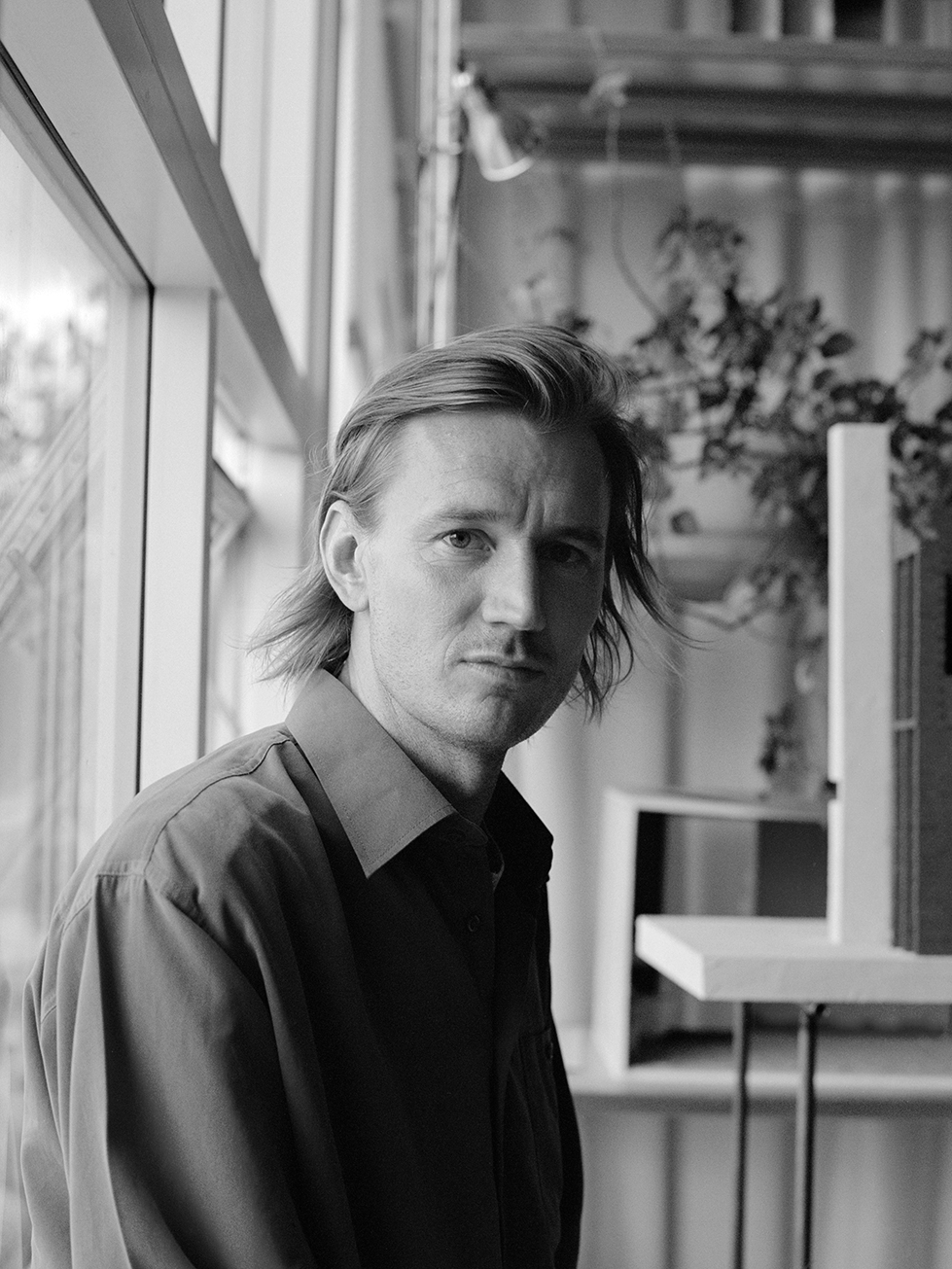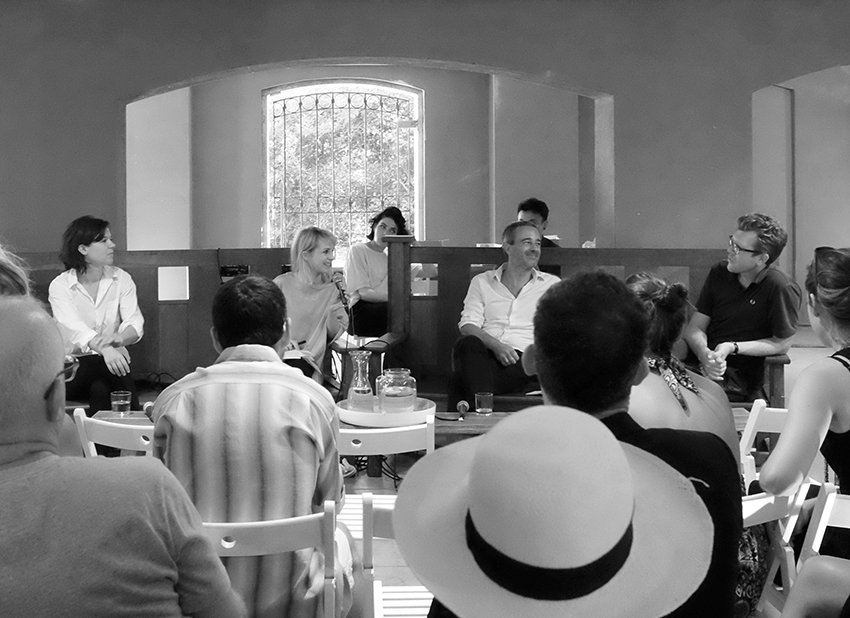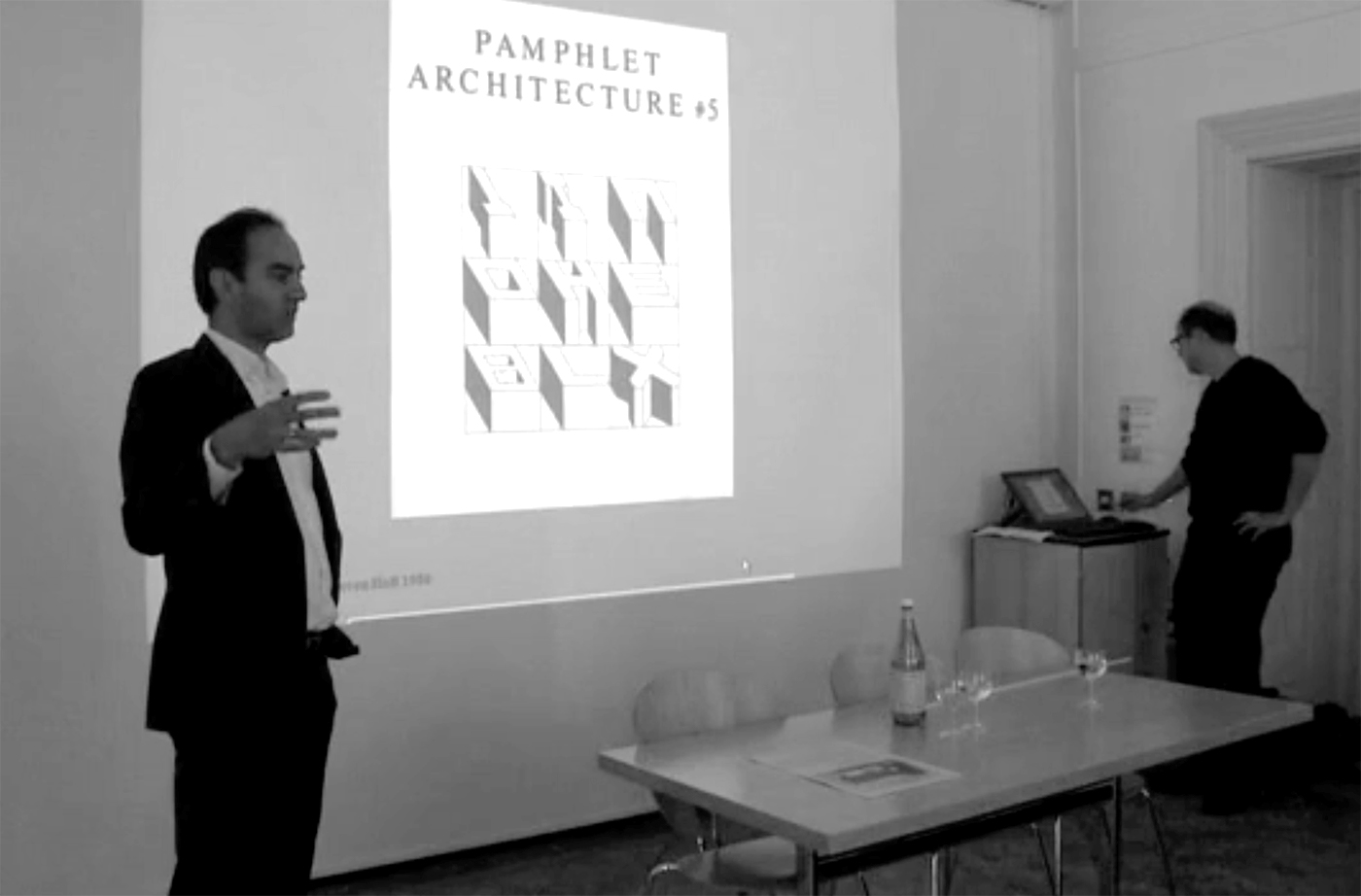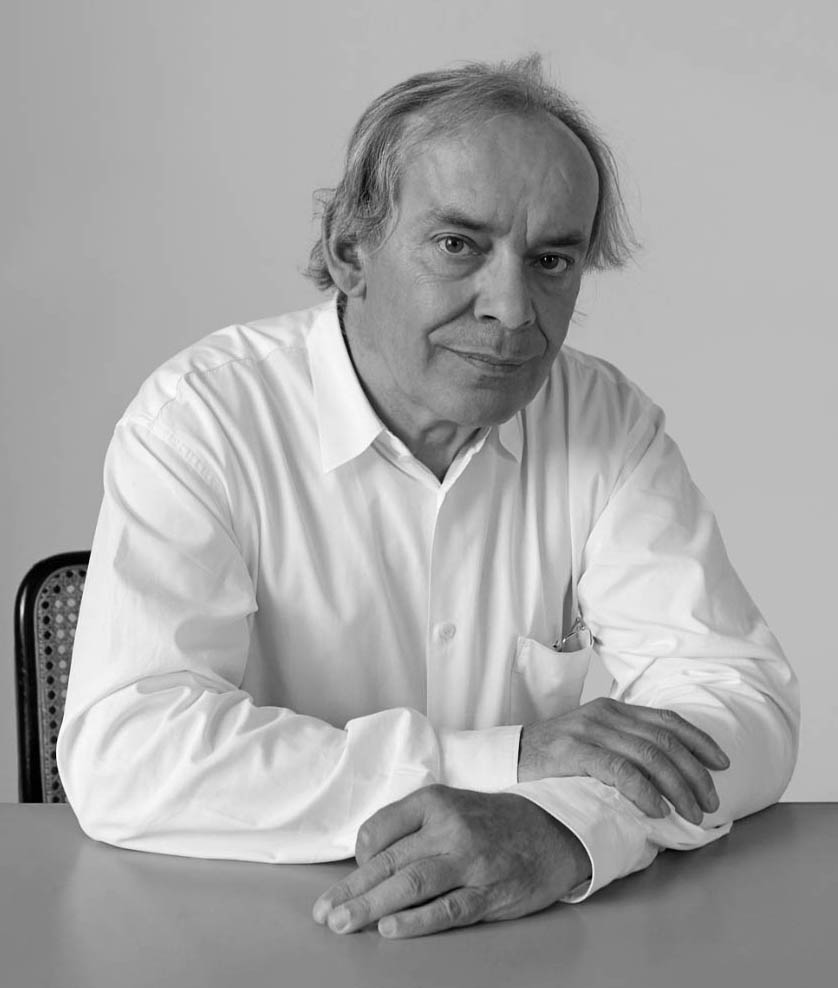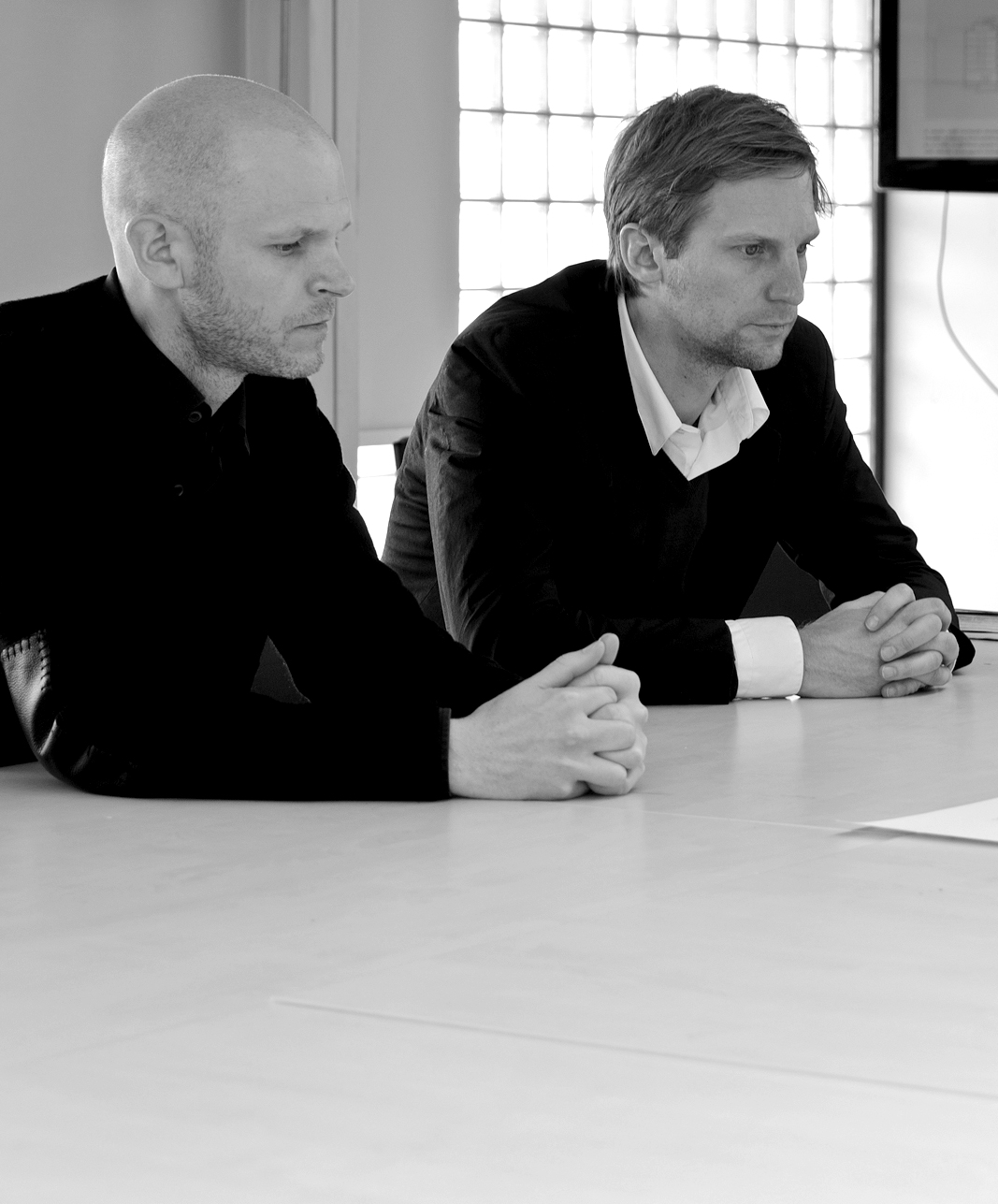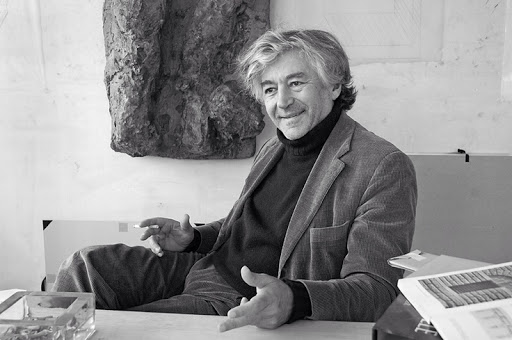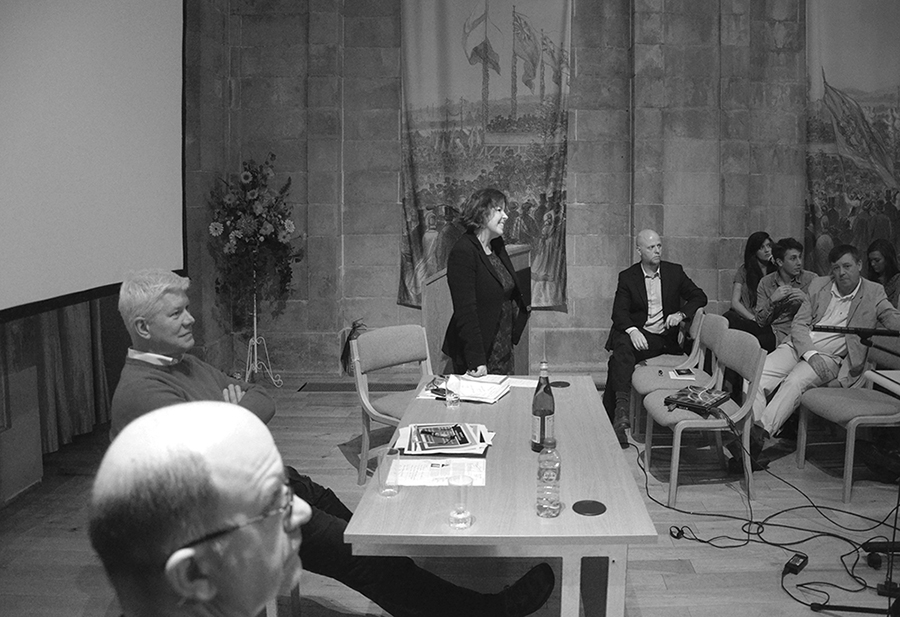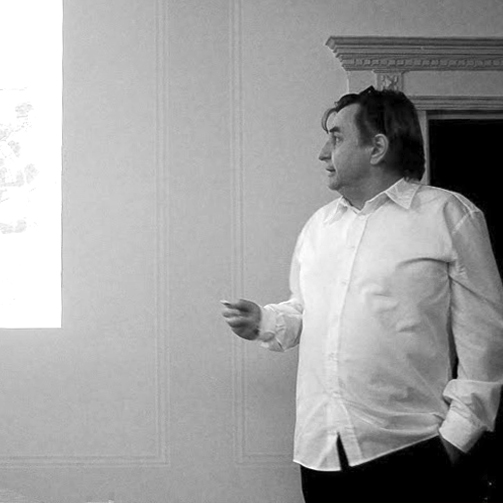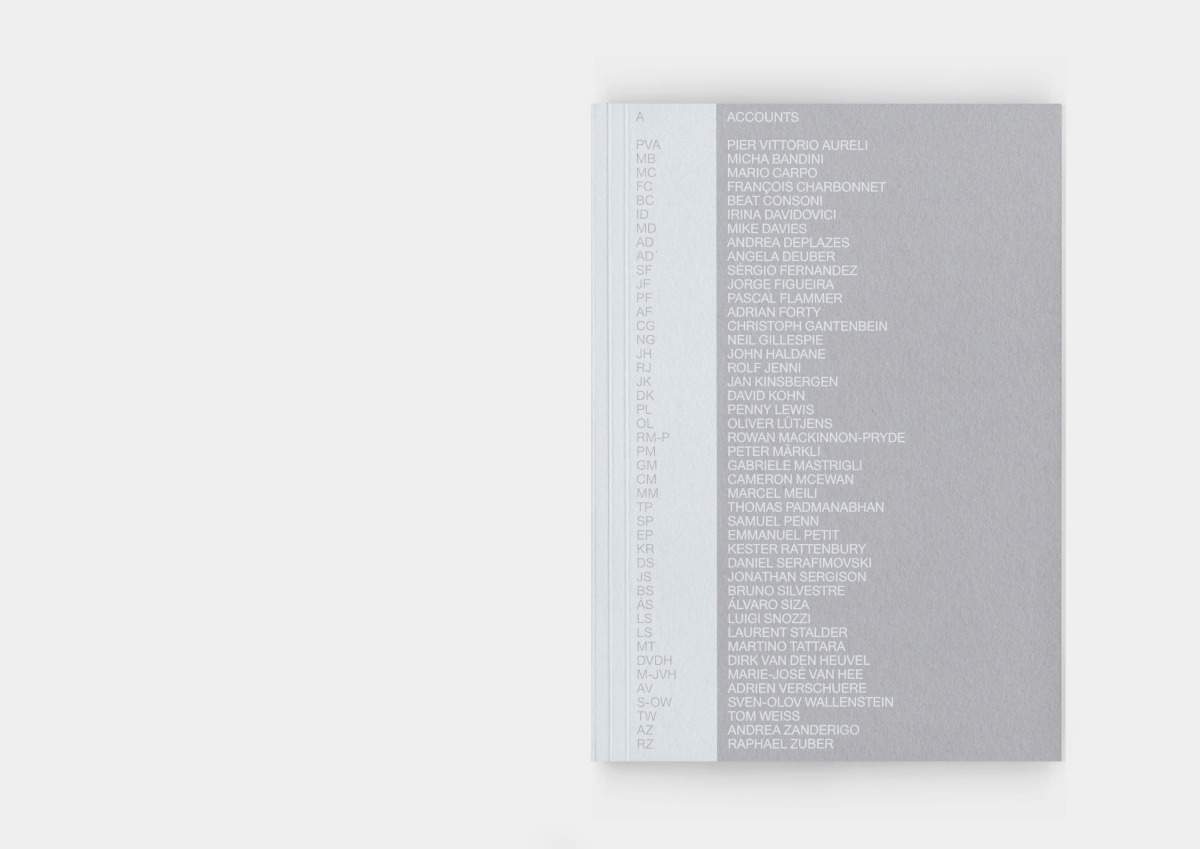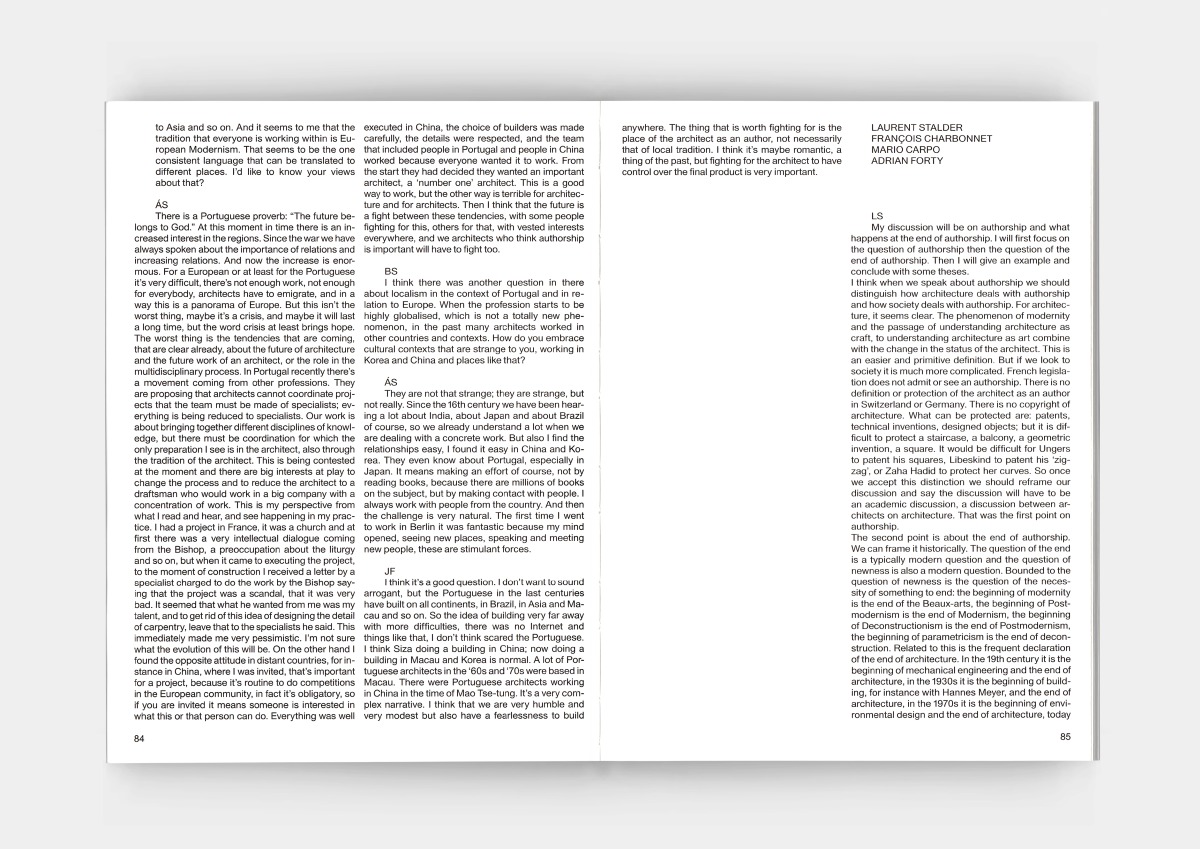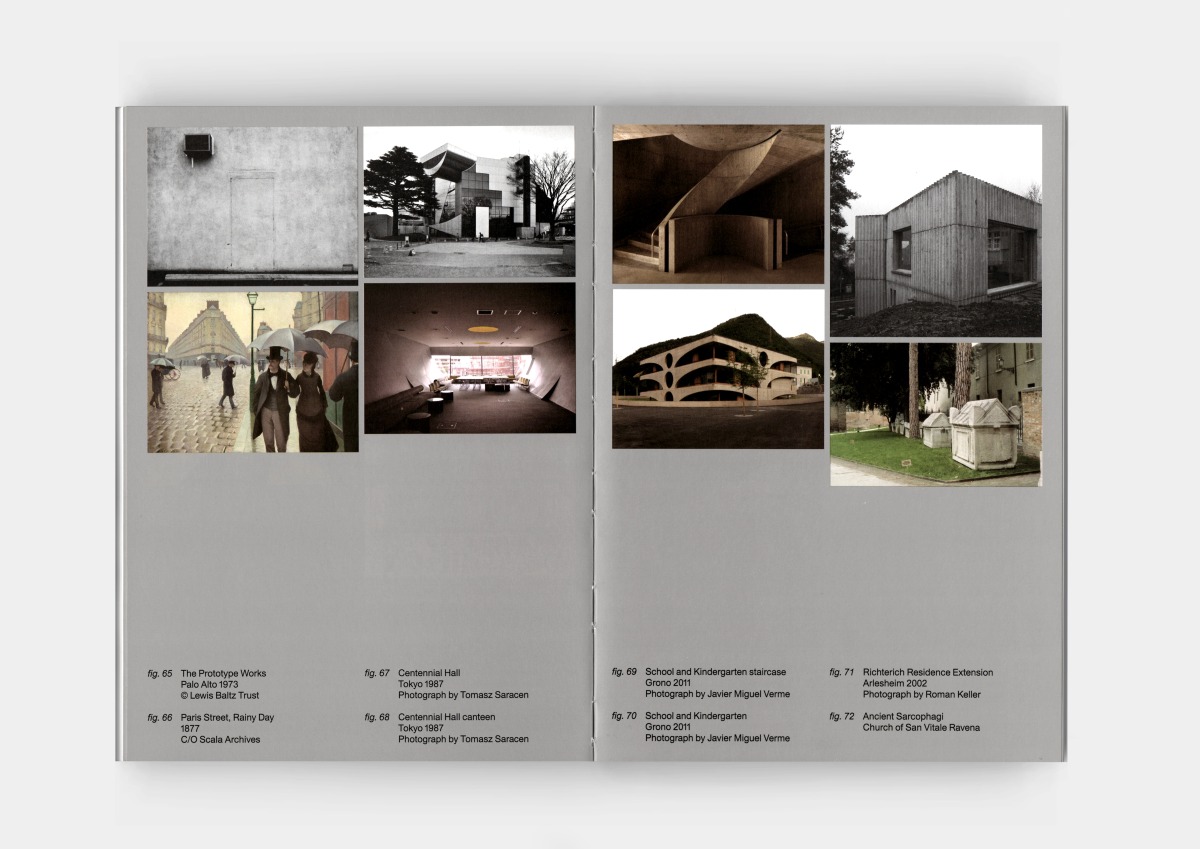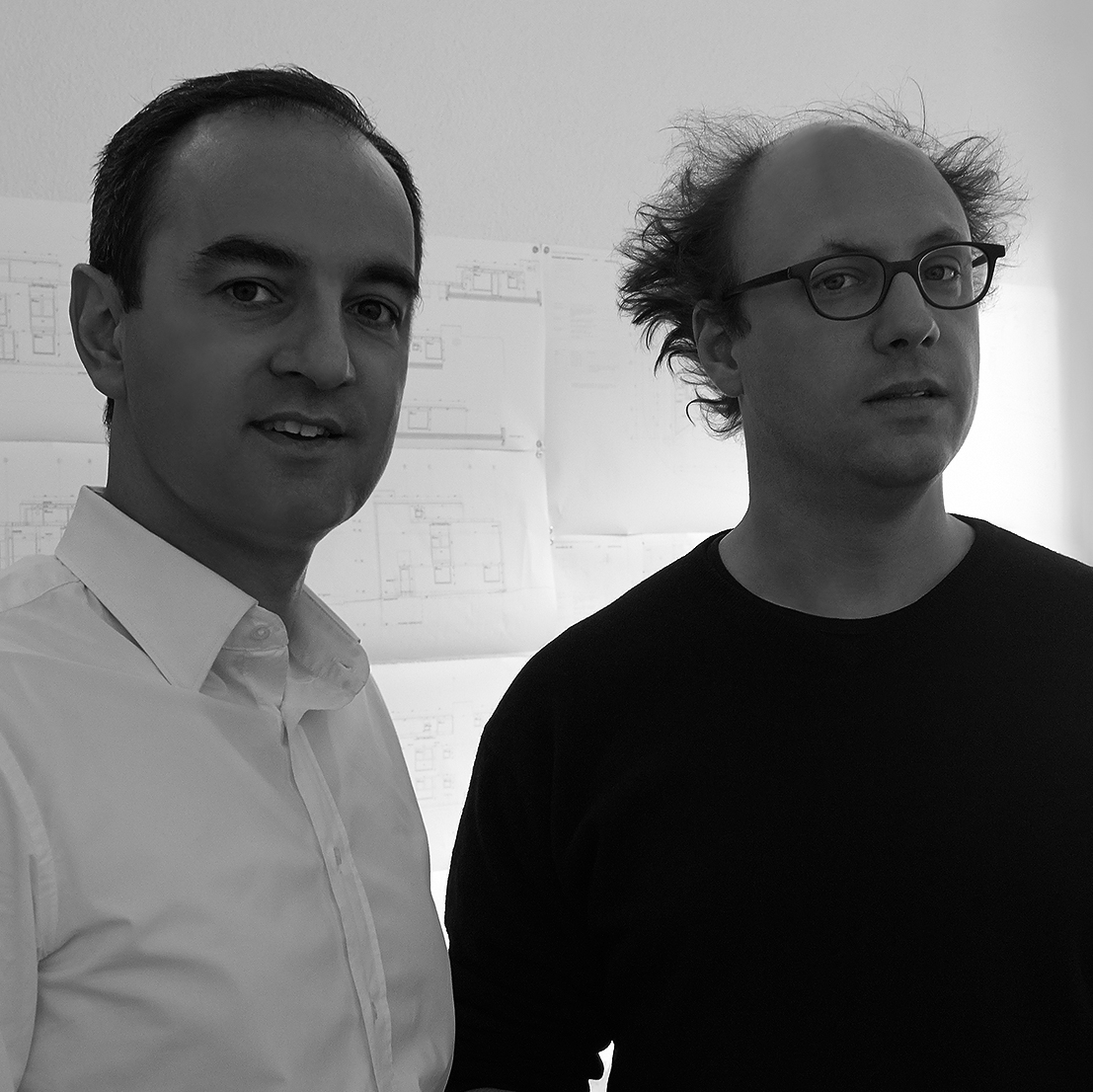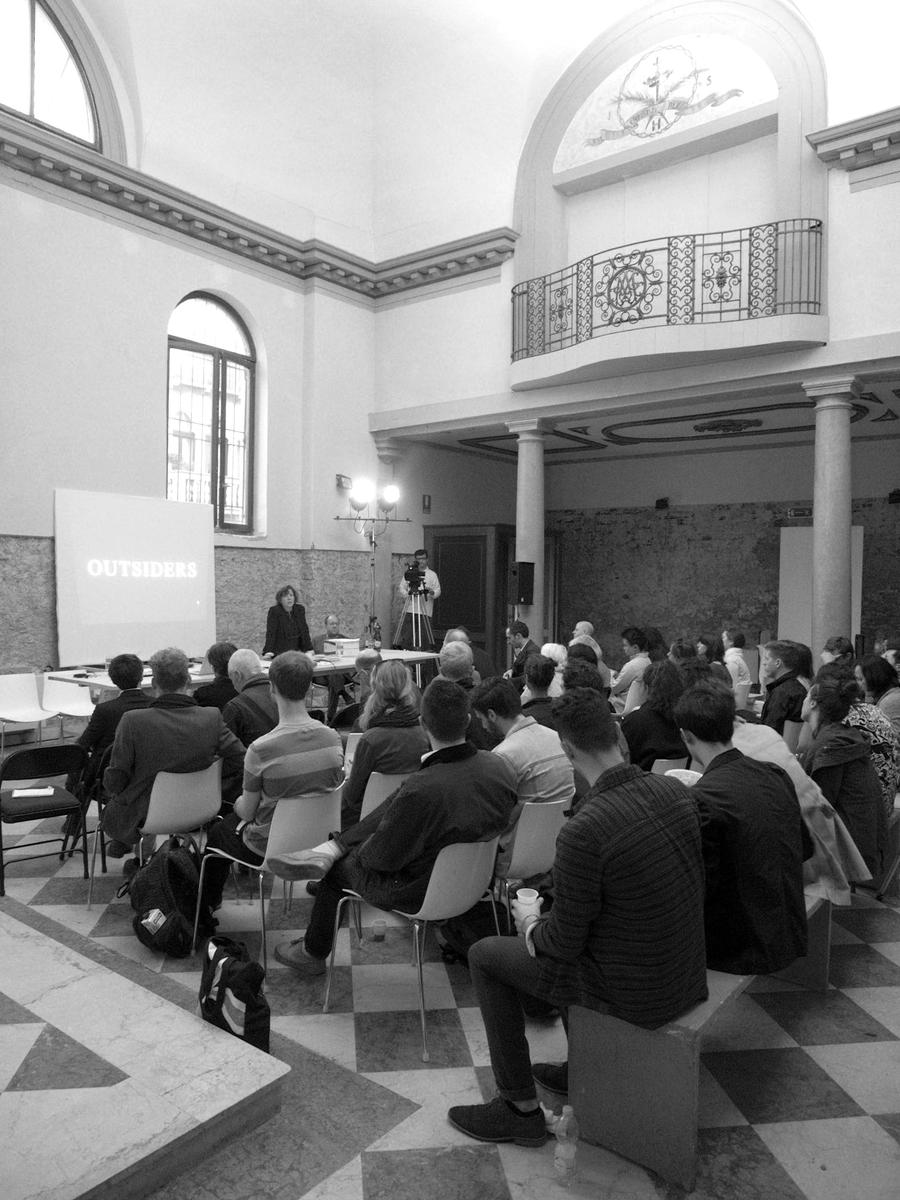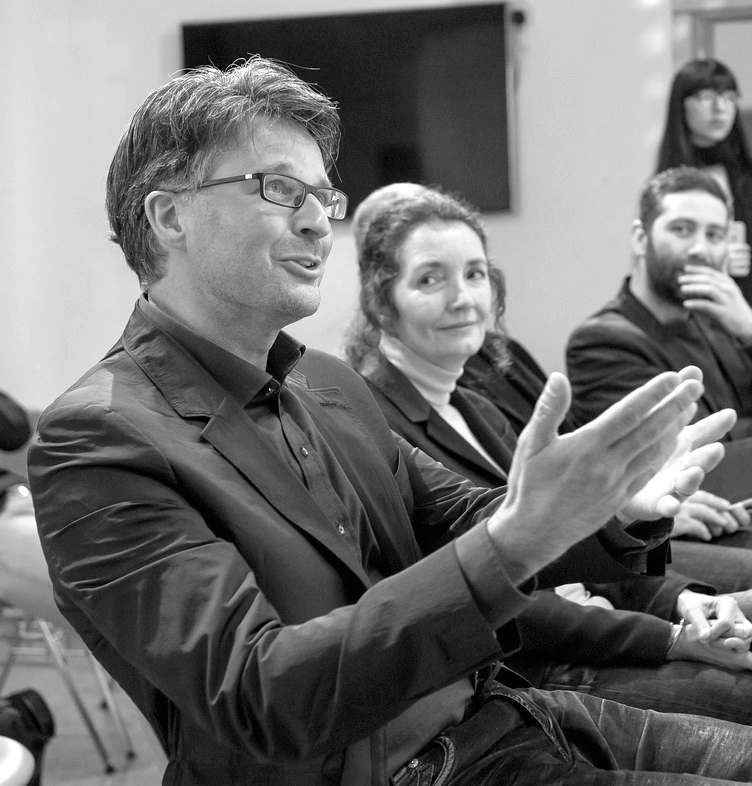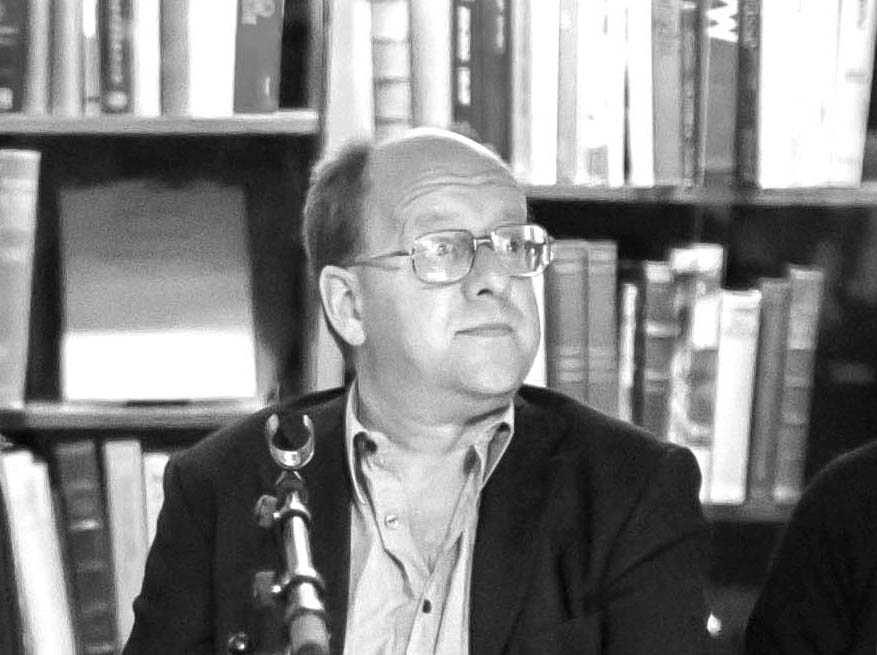LOG
Søren Pihlmann is the founder of Copenhagen-based office pihlmann architects. His practice combines an exploratory approach towards new building materials with all that is existing, both the overproduced as well as the underestimated. These, he combines, based on their inherent qualities.
INTERVIEW
August 2023
Edinburgh/
Copenhagen
ANGELA DEUBER
PASCAL FLAMMER
OLIVER LÜTJENS
THOMAS PADMANABHAN
ACCOUNTABILITY
Architects are, in practice or in principle, agents in the continuation of the formal structure of the world. Past Masters were able to lend weight to their work because they responded dialectically to the discipline and wider social imperatives. A willingness to engage with the general concerns of art and society gave their work meaning. Today the grand narrative has collapsed into a relativistic world-view. Consequently architects are much more free to be instrumental, to curate particular threads as they establish their own personal or historic narrative. Could this signal a deficit in accountability, or is it a hard-won freedom.
DISCUSSION
November 2019
Zürich
ACCOUNTS
A comprehensive record of the first five years of AE activity. Contributors: Pier Vittorio Aureli, Micha Bandini, Mario Carpo, Francois Charbonnet, Beat Consoni, Irina Davidovici, Mike Davies, Andrea Deplazes, Angela Deuber, Sérgio Fernandez, Jorge Figueira, Pascal Flammer, Adrian Forty, Christoph Gantenbein, Neil Gillespie, John Haldane, Rolf Jenni and Tom Weiss, Jan Kinsbergen, David Kohn, Oliver Lütjens and Thomas Padmanabhan, Peter Märkli, Gabriele Mastrigli, Marcel Meili, Emmanuel Petit, Kester Rattenbury, Daniel Serafimovski, Jonathan Sergison, Bruno Silvestre, Álvaro Siza, Luigi Snozzi, Laurent Stalder, Martino Tattara, Dirk van den Heuvel, Marie-José Van Hee, Adrien Verschuere, Sven-Olov Wallenstein, Andrea Zanderigo, Raphael Zuber.
BOOK
November 2019
Pelinu Projects
RAPHAEL ZUBER
Raphael Zuber studied architecture until 2001 at ETH Zurich. In the same year he opened a practice in Riva San Vitale, in 2003 his own practice in Chur. His first building is the schoolhouse Grono which was completed in summer 2011. Among his major projects are the ethnographic museum Neuchâtel, the office building in Monte Carasso and the funeral chapel in Steinhausen. His articles and works have been published in several journals including Abitare, archithese and The Architectural Review. Raphael Zuber has taught at the Accademia di Architettura di Mendrisio, the Bern University of Applied Sciences, the Cornell University, Ithaca, New York, the Oslo School of Architecture and Design, the EPFL Lausanne and the ETH Zürich.
INTERVIEW 2
January 2019
Bucharest
OLIVER LÜTJENS
THOMAS PADMANABHAN
Oliver Lütjens and Thomas Padmanabhan established their Zurich based practice in 2007, having both worked for the office of Diener & Diener. They have gone on to realise a series of highly individual residential projects which draw on a strikingly wide range of historical reference. The recent work of Lütjens Padmanabhan Architects focuses on housing in the residential districts surrounding the cities of Zürich, Basel and Munich. Despite their love for a more refined, urbane architecture, Oliver Lütjens and Thomas Padmanabhan have light-heartedly embraced the fact that most of their commissions are set in the mundane anonymity of suburbia. Their interest in complex architectural expression has distanced the practice from the craft-oriented mainstream of Swiss architecture. The current projects explore the impossible task of reconciling the autonomy of the exterior facade with the typological uncertainty of interior spaces and loose urban contexts.
INTERVIEW
December 2016
Zürich
ANGELA DEUBER
ADRIEN VERSCHUERE
ANDREA ZANDERIGO
There was a time when architecture was understood as an aesthetic discipline. Today as architecture oscillates between two extremes, the pursuit of the icon and the mass production of the mundane, architects seem largely reluctant to discuss beauty or describe and defend their work in aesthetic terms. So how should we explain the collapse of the aesthetic in architecture and the broader cultural dismissal of the importance beauty and individual judgement? Drawing on the personal practice of a trio of speakers based in Italy, Switzerland and Belgium, this round table discussion explores the role of beauty and aesthetics in practice today.
DISCUSSION
August 2016
Venice
ANGELA DEUBER
ADRIEN VERSCHUERE
ANDREA ZANDERIGO
What drives the architect and what is architecture? These questions have engaged the passions of the profession since its birth. At certain moments in history the answers have been clear. Today they are highly contested. Architects find themselves gathered into camps, each with some idea of the defining feature of the discipline, but frustrated by the lack of space in which to produce great work. For some architecture is about meeting human and social needs, for others it is about excellence in building. There are also those who argue that architecture is at its core an artistic or aesthetic enterprise concerned with more than the simple appearance of things. With Angela Deuber, Adrien Verschuere and Andrea Zanderigo.
LECTURE
DISCUSSION
July 2016
Edinburgh
MARIE-JOSÉ VAN HEE
DAVID KOHN
Marie-José and David Kohn discuss design approaches that foreground human life and the passage of time in architecture, illustrated with projects. From conversations with clients to the tracing of a line in a sketch, from gauging the pitch of a façade to the framing of late afternoon light, they will explore a shared concern for placing inhabitation centre stage and the process by which a humanistic vision of architecture and the city can be achieved. They will consider if this approach offers resistance against the acceleration and systematisation of design processes in contemporary practice.
LECTURE
DISCUSSION
September 2015
Brussels
Raphael Zuber studied architecture until 2001 at ETH Zurich. In the same year he opened a practice in Riva San Vitale, in 2003 his own practice in Chur. His first building is the schoolhouse Grono which was completed in summer 2011. Among his major projects are the ethnographic museum Neuchâtel, the office building in Monte Carasso and the funeral chapel in Steinhausen. His articles and works have been published in several journals including Abitare, archithese and The Architectural Review. Raphael Zuber has taught at the Accademia di Architettura di Mendrisio, the Bern University of Applied Sciences, the Cornell University, Ithaca, New York, the Oslo School of Architecture and Design, the EPFL Lausanne and the ETH Zürich.
INTERVIEW 1
September 2015
Chur
ANGELA DEUBER
PASCAL FLAMMER
CHRIST & GANTENBEIN
REIACH & HALL
JOHANNES NORLANDER
RAUMBUREAU
RAPHAEL ZUBER
ISLAND
Eight houses for the Isle of Harris, Outer Hebrides
Following a series of discussions and events the AE invited seven architects to design houses for real clients living or planning to move to the Outer Hebrides. Briefs for each house were provided by the clients. The speculative designs were produced as a collaborative exercise, provoking architects, the Hebridean people and the wider community to reimagine how one might live on the Isle of Harris.
EXHIBITION
November 2014
Edinburgh
EMMANUEL PETIT
SVEN-OLOV WALLENSTEIN
DIRK VAN DEN HEUVEL
A look at second generation Modernists architects and their impact on thinking in the United Kingdom and Europe. Architects during this period operated within a culture in which there was a strong sense of a collective social project—the welfare state—and yet a small number of emerging and established architects chose not to legitimise their professional activity through Welfarism. Their task was to revitalise architecture at its core. In their own way, James Stirling, the Smithsons and Ludwig Mies van der Rohe were at the forefront in setting the agenda for a reconstructed idea of modern culture tied to the history of innovation, intellectualism, will and agency. Their stance was, as with all significant artists, to give a voice and form to their particular epoch.
LECTURES
October 2014
Venice
Dirk van den Heuvel is Associate Professor at TU Delft. His expertise is in the field of postwar modern architecture. His output includes 'Team 10—In Search of a Utopia of the Present' and 'Alison and Peter Smithson—from the House of the Future to a house of today'. He has co-curated the Dutch entry for the 2014 Venice Architecture Biennale, Open: A Bakema Celebration reflecting on the idea of an open society through the work and research of Jaap Bakema.
INTERVIEW
October 2014
Venice
EMMANUEL PETIT
Emmanuel Petit is an Architect, Writer, and Teacher. He is editor of Philip Johnson: The Constancy of Change and is the editor of Schlepping through Ambivalence: Writings on an American Architectural Condition, a book of Stanley Tigerman's collected essays. Petit is the author of the book Irony, or, The Self-Critical Opacity of Postmodern Architecture and has recently been appointed Sir Banister Fletcher Visiting Professor at the Bartlett School of Architecture.
INTERVIEW
October 2014
Venice
Sven-Olov Wallenstein is Professor of Philosophy at Södertörn University. His areas of research include aesthetic theory, Architecture and Modernity, German Idealism, phenomenology, and modern philosophies of desire, power, and subjectivity. Works in progress include translations of Diderot's Salons and essays on art, Hegel's Grundlinien der Philosophie des Rechts, and Adorno's Negative Dialektik and Ästhetische Theorie. He is editor-in-chief of Site Magazine.
INTERVIEW
October 2014
Venice
SÉRGIO FERNANDEZ
JORGE FIGUEIRA
BRUNO SILVESTRE
ÁLVARO SIZA
LUIS URBANO
A discussion on the in pre-revolution experiences of Álvaro Siza and Sérgio Fernandez seen through the lense of the architectural and political culture of the time. Salazar’s Portugal saw architecture fall into a narrow set of empty stylistic patterns. In reaction architects, led initially by Keil Amaral and later Tavora produced a thick survey called 'Arquitectura Popular em Portugal'. Siza’s architecture emerged from an epoch that sought to recover from the betrayals of language and the misuse of history.
LECTURE
DISCUSSION
October 2014
Edinburgh
LAURENT STALDER
MARIO CARPO
ADRIAN FORTY
FRANÇOIS CHARBONNET
There is a consensus that the role of the architects as the director of the process of making buildings, or the sole author, is largely outdated. Many UK architects bemoan the marginalisation of the architect in the construction industry and look to Switzerland and Swiss architects as a glorious remnant of a past golden age. In academia, particularly in the US but increasingly in Europe too, the shift in the position of the architect has been explained as an inevitable change driven by developments in the way that buildings are produced, in particular the 'digital turn'. The development of a more collaborative approach to design management and construction is often understood as a progressive move associated with an age which places greater value on process and equity than individual intellectual property. A century ago we were told that the process of mechanisation would transform the role of the artist and the architect and yet it gave rise to the 'Modern Masters'. Is talk of 'marginalisation' defeatist or necessary?
DISCUSSION
June 2014
London
OLIVER LÜTJENS
THOMAS PADMANABHAN
HOUSES
The recent work of Lütjens Padmanabhan Architects focuses on housing in the residential districts surrounding the cities of Zürich, Basel and Munich. Despite their love for a more refined, urbane architecture, Oliver Lütjens and Thomas Padmanabhan have light-heartedly embraced the fact that most of their commissions are set in the mundane anonymity of suburbia. Their interest in complex architectural expression has distanced the practice from the craft-oriented mainstream of Swiss architecture. The current projects explore the impossible task of reconciling the autonomy of the exterior facade with the typological uncertainty of interior spaces and loose urban contexts.
LECTURE
May 2014
Aberdeen
NEIL GILLESPIE
Neil Gillespie joined Reiach and Hall in 1978, becoming a director in 1987. He has been design director and chairman of Reiach and Hall Architects since 1999. Neil has been a design critic at many architecture schools across the UK and lectures extensively, both on architectural theory and practice in the UK and internationally. Neil was awarded OBE for Services to Architecture in the Queen's Honours List, in 2011.
INTERVIEW
March 2014
Edinburgh
MICHA BANDINI
IRINA DAVIDOVICI
JONATHAN SERGISON
History has traditionally been a constituent part of architectural education, yet its status has been and remains challenged. Whereas modernist teachers were preoccupied with progress and mechanisation, often at the behest of history, it was the relativism of postmodern thinking that rendered history positively flat. Now, in many schools of architecture historical studies have been objectified so that they can be used as a tool to inform design method and stylistic pursuits, or its study has ventured so far into the realms of other disciplines and political movements that it often avoids the fundamental concerns of the discipline. In this culture how are we to teach students of architecture the importance of history?
TALKS
October 2013
Mendrisio
MARCEL MEILI (1953-2019)
Marcel Meili studied architecture at the Swiss Federal Polytechnic (ETH Zürich) (1973-1980) and was a research associate at the Institute for History and Theory of Architecture, ETH Zurich. He worked in the office of Prof. Dolf Schnebli (1983-85) and was a teaching assistant for Prof. Mario Campi (1985-87). In 1987, he formed an office in Zürich together with Markus Peter.
INTERVIEW
July 2013
Zürich
LUIGI SNOZZI (1932-2020)
DANIEL SERAFIMOVSKI
Luigi Snozzi is perhaps best known for his unique and longstanding relationship with the Swiss mountain town Monte Carasso, where he worked with the Mayor and community for over 35 years to establish a new urban plan and regulatory framework for the future development of the settlement. Since then he has worked with several international collaborators and friends—a long list of esteemed architects including Paolo Mendes da Rocha in Brazil and Alvaro Siza in Portugal—to establish an architecture that still engages social and political issues in visceral city projects across the globe. We will explore his ideologies, buildings and urban inventions. Far from being a reflection on a body of work, this discussion aims to refresh the spirit of resistance lacking in contemporary architecture.
LECTURE
DISCUSSION
May 2013
Aberdeen
LUIGI SNOZZI (1932-2020)
Luigi Snozzi studied at the Swiss Federal Institute of Technology in Zürich. From 1962 to 1971, Snozzi worked in association with architect Livio Vacchini. From 1982 to 1984, he was a Visiting Professor and in 1985 he was appointed Professor of Architecture at École Polytechnique Fédérale de Lausanne. Today, Snozzi is a professor of the University of Sassari, at the Faculty of Architecture of Alghero, Sardinia.
INTERVIEW
May 2013
Aberdeen
MARTINO TATTARA
GABRIELE MASTRIGLI
Whether through research or speculative projects, concrete proposals or large-scale visions, this event will address the possibility of a critical approach to architecture and the city as a necessary ground for the production of ideas and models that question the status-quo and contribute to the development of our society. Contrary to a dominant problem-solving approach of a large portion of today's architectural production, the discipline has often, in the past, been characterised by a complimentary attitude, which is less subservient to political authority and is not detached from the possibility of questioning the current condition and contributing to its transformation. Dogma was founded in 2002 is led by Pier Vittorio Aureli and Martino Tattara. Gabriele Mastrigli has written many texts in books and magazines in tandem with Aureli and Tattara offering a broad historic understanding of Italian architectural culture.
LECTURE
DISCUSSION
November 2012
Edinburgh
Jonathan
graduated from the Architectural Association School of Architecture in 1989 and gained professional experience working for David Chipperfield and Tony Fretton. Jonathan has taught at a number of schools of architecture, including the University of North London, the Architectural Association in London, was Visiting Professor at the Swiss Federal Institute of Technology (ETH) in Zurich, the Ecole Polytechnique Fédérale in Lausanne, the Oslo School of Architecture and Design and the Harvard University Graduate School of Design. Since 2008 he has been Professor of Design and Construction at the Accademia di Mendrisio, Switzerland. He is particularly interested in urban questions and the changing conditions of the contemporary European city. More specifically, he has addressed through writing, teaching and practice the role housing might play in this changing context. He regularly writes and lectures, attends reviews in schools of architecture and competition juries.
INTERVIEW
October 2012
Venice
PIER VITTORIO AURELI
CITY
The contribution of architecture to the contemporary city is unclear. Even the master plan is contentious. In education we debate whether it is possible to set out grand visions or whether it is more appropriate to suggest the possibility of small scale incremental change. In practice the architect has been encouraged to understand his or her role as the 'repairer' of cities following the 'disruption' of modernisation and deindustrialisation. Is it possible to re-imagine architecture outside of these formal and cultural conventions? Pier Vittorio Aureli is an architect, writer and educator. In discussion with Penny Lewis, Aureli will explore the relationship between architecture and the city.
LECTURE
May 2012
Aberdeen
CHRISTOPH GANTENBEIN
RAPHAEL ZUBER
BUILDINGS
Since the exhibtion 'Teaching Architecture: 3 positions made in Switzerland' and the subsequent publication of the accompanying award winning books, 'Important Buildings' by Raphael Zuber and 'Hong Kong Typology' and 'Pictures from Italy' by Christ & Gantenbein', it has become evident that the conception of their architectural ideas are influenced by careful and detailed observation of existing buildings. Extensive travel has exposed them to a variety of exemplary buildings the study of which has focused their ability to decipher rich architectural configurations and to make precise personal judgements in the designs they create. In this lecture both architects will present plans and photographs of a building that has been important to them personally. Using the two examples as a starting point the following discussion will examine the general qualities of buildings through the shared lens of architectural principles, personal preferences and experien
LECTURE
May 2012
Dundee
ROLF JENNI
TOM WEISS
JAN KINSBERGEN
Present-day architectural debate and production in Switzerland is dominated by a tendency to indulge regressive traditional imagery. Hidden within a deeply rooted culture of consensus and in unquestioning accord with the demands of the market, conventionalist values are established in order to resist the equalizing power and the uncertainty brought by globalization. Thus current architecture epitomizes a morally motivated suspicion toward anything experimental or radical. In opposition, Rolf Jenni, Tom Weiss and Jan Kinsbergen share the conviction, that architecture is itself the frame within which alternative forms of life and visions for the society are revealed and debated. They push the boundaries of convention because they believe that it has always been radical disciplinary thinking that advances architectural production. Their critique is not limited to Switzerland. It is an analysis of a general culture of relativism that regards the individual creative endeavor as a reoccurring spectacle, rather than a means to progress.
LECTURE
February 2012
Glasgow
PETER MÄRKLI
Peter Märkli was born in 1953. He lives and works as architect in Zürich, Switzerland. In 1978, he established his own studio, Studio Märkli, in Zurich. From 2002–2015 he had a Professorship in architecture at the ETH in Zurich. Since 2013, he is a visiting professor at MARCH school of architecture in Moscow. Märkli sees architecture as an ancient language with its own grammar. He painstakingly designs and builds architectural projects with an unfailingly rigorous approach.
INTERVIEW
January 2012
Zürich
Andrea Deplazes studied architecture at the ETH in Zurich and graduated in 1988. Along with Valentin Bearth 1988 he founded the architectural firm Bearth + Deplazes Architekten AG. In the same year he received his diploma and was working then as a lecturer for the HTW Chur. In 1997 Deplazes left his position at the HTL and became a professor of architecture and design at ETH Zürich. From 2005 to 2007 he was head of the department of architecture at the ETH. Currently he lives and works in Zürich and Chur.
INTERVIEW
January 2012
Zürich
Christoph Gantenbein established Christ & Gantenbein with Emanuel Christ in 1998. Together with their four associates and a team of 35 architects, they work on a wide range of projects: from private assignments, renovation of historic buildings to housing, office buildings and bridges as well as large scale masterplans. After many teaching assignments in Switzerland and abroad, Emanuel Christ and Christoph Gantenbein became chairs at the ETH Zürich in 2017.
INTERVIEW
January 2012
Zürich
MIKE DAVIES
KESTER RATTENBURY
Forty years ago the Pompidou Centre competition was a source of optimism. Despite the economic uncertainty, a young practice, a radical design solution and the vital public debate around the project evoked a positive attitude to new technology and innovative design ideas. Over the past four decades the Pompidou has been widely discussed. It is said to mark a shift in attitudes to urban design, to the idea of the art museum and the concept of flexible space. This discussion will focus on the question of technology and public attitudes to technology and how they have changed since 1971. Mike Davies and Kester Rattenbury will discuss the significance of the building. Mike, a director of Rogers Stirk Harbour + Partners, worked for six years on the Pompidou Centre and then Lloyd's, INMOS and London's Heathrow. Kester Rattenbury co-produced Supercrit 3 on the Pompidou Centre in April 2005—the proceedings of which are to be published by Routledge.
LECTURE
DISCUSSION
December 2011
Edinburgh
NEIL GILLESPIE
JOHN HALDANE
Architect Neil Gillespie will explore the idea of doubt and certainty with help from eminent Professor of Philosophy John Haldane. Doubt, melancholy and 'the North' inform much of Neil Gillespie's practice. He has found the question of doubt provocative in both his design work, his teaching and his collaborations with artists. Doubt has always been an essential ingredient of any public life whether it was 14th century Italy or modern Scotland. An open, questioning society in which doubt can be freely expressed develops the resources to deal with shifts and changes in economic and social life. Contemporary architecture is commissioned in the context of a very narrow concept of public life. Neil Gillespie, John Haldane and a public audience will explore the issue of doubt, contemporary culture and role and work of the architect.
LECTURE
DISCUSSION
October 2011
Dundee
Beat Consoni lives and works in the in the Bodensee region of Switzerland and is well known for producing striking and finely balanced cubic buildings cast in concrete. His recent work is always based on an analysis of the urban space and the topography of the site. Consoni's buildings have won a number of prestigious awards and international recognition.
INTERVIEW
January 2011
St.Gallen
Pascal Flammer studied at the ETH Zürich, Lausanne and at the TU in Delft. He has traveled extensively and opened his practice in 2005 and has won several national and international awards. Pascal gained his experience through his time at Valerio Olgiati, where he worked from 1998 until 2005. He has taught at the Accademia di Architettura di Mendrisio, the GSD at Harvard University and at the Sandberg Instituut in Amsterdam and at the ETH Zürich. Raphael Zuber studied architecture at the Swiss Federal Institute of Technology Zürich (ETHZ) and directly after opened his own office. His first building is the Schoolhouse Grono. In 2016 he completed his second one, the Apartment building in Domat/Ems. Raphael Zuber has taught at several architecture schools including the Accademia di Architettura di Mendrisio, the Oslo School of Architecture and Design, the EPF Lausanne and the ETH Zürich.
INTERVIEW
January 2011
Solothurn
